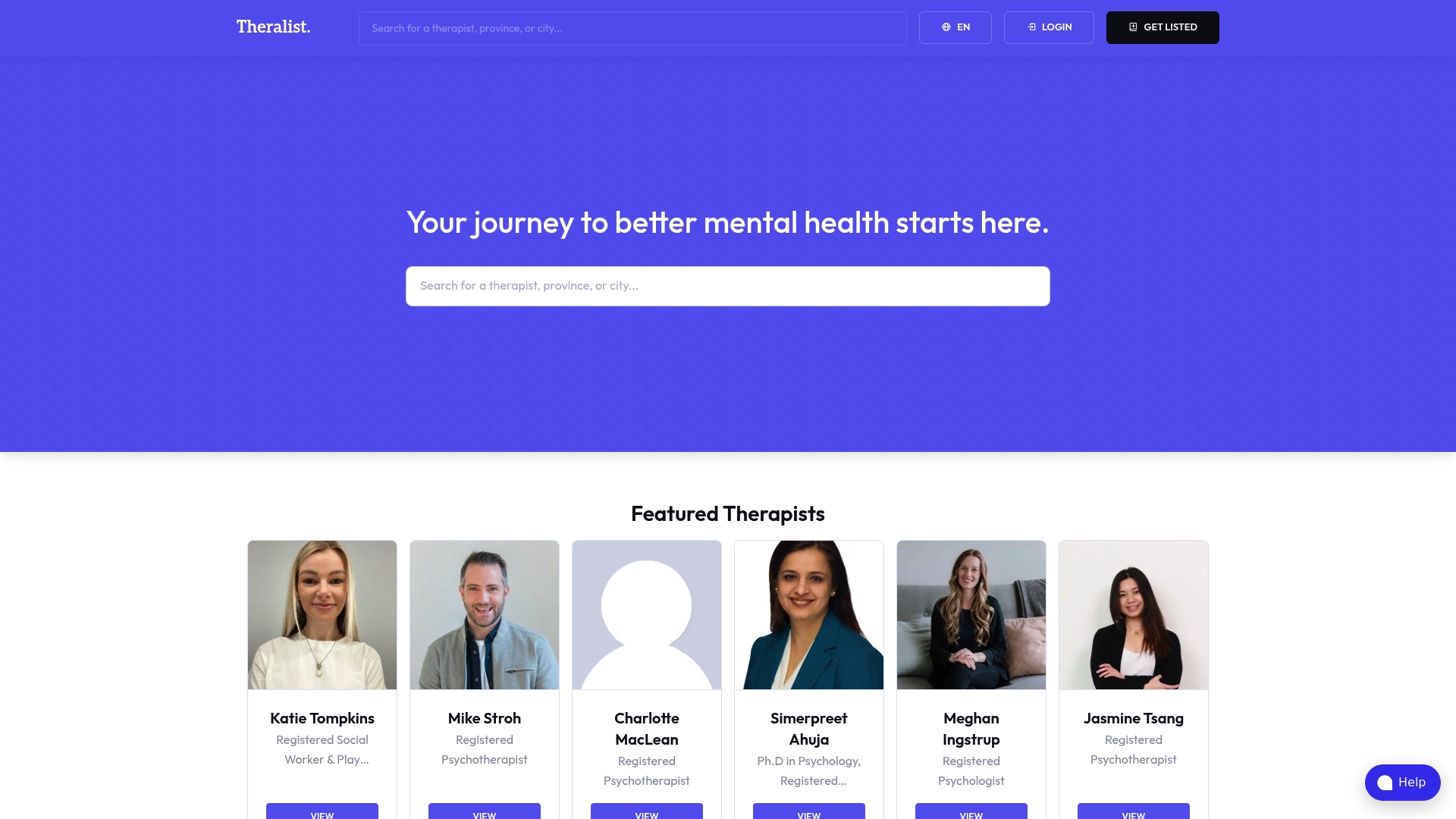Coping with Anxiety and Depression: Practical Tips for 2025

Lots of Canadians are wrestling with anxiety and depression every single day and the numbers keep climbing. In fact, one in four Canadians will experience mental health challenges at some point in their lives. You might think it’s all about spotting sadness or worry but there’s way more to it than just feeling down. The big surprise is that everyday routines and simple coping tricks can be just as powerful as therapy for turning things around.
Table of Contents
- Recognizing Symptoms Of Anxiety And Depression
- Everyday Strategies For Managing Mental Health
- Finding Support And Therapy In Canada
- Resources For Mental Health Practitioners
Quick Summary
| Takeaway | Explanation |
|---|---|
| Recognize key signs of anxiety and depression | Identify physical, emotional, and behavioral symptoms to intervene early and seek help. |
| Establish supportive daily routines | Structured routines can reduce symptoms and create a sense of stability in daily life. |
| Utilize practical coping mechanisms | Implement breathing exercises and journaling to manage overwhelming emotions effectively. |
| Know when to seek professional help | If symptoms persist longer than two weeks or disrupt daily functioning, consult a mental health professional. |
| Access diverse therapy options in Canada | Explore individual counseling, group therapy, and online services tailored to your specific needs. |
Recognizing Symptoms of Anxiety and Depression
Understanding the signs of anxiety and depression is crucial for early intervention and effective coping strategies. These mental health conditions often manifest through complex emotional and physical symptoms that can significantly impact daily functioning.
Physical and Emotional Warning Signs
Anxiety and depression frequently present through interconnected physical and emotional indicators. Research from the Canadian Mental Health Association reveals that individuals experiencing these conditions may encounter a range of symptoms that extend beyond typical mood fluctuations.
Physical symptoms can include persistent fatigue, unexplained body aches, sleep disruptions, and significant changes in appetite. People might experience sudden weight changes, tension headaches, or digestive issues without apparent medical causes. Emotionally, individuals may feel overwhelming sadness, persistent worry, or a pervasive sense of emptiness that doesn’t resolve with typical self-care approaches.
Behavioral Indicators and Patterns
Behavioral changes often serve as critical indicators of underlying mental health challenges. According to the National Institute of Mental Health, key behavioral signs include:
- Social Withdrawal: Gradually reducing social interactions and isolating oneself from friends and family
- Reduced Motivation: Struggling to complete daily tasks or losing interest in previously enjoyable activities
- Cognitive Challenges: Experiencing difficulty concentrating, making decisions, or maintaining clear thought processes
These behavioral patterns can create a cyclical effect where isolation and reduced engagement further exacerbate anxiety and depressive symptoms. Recognizing these signs early allows individuals to seek appropriate support and learn more about comprehensive mental health strategies.
When to Seek Professional Help
Identifying when professional intervention becomes necessary is crucial. If symptoms persist for more than two weeks, significantly disrupt daily functioning, or include thoughts of self-harm, immediate professional consultation is recommended. Mental health professionals can provide accurate diagnoses, develop personalized treatment plans, and offer therapeutic interventions tailored to individual needs.
It’s important to understand that experiencing these symptoms doesn’t indicate weakness but represents a complex interaction of biological, psychological, and environmental factors. Compassionate, professional support can help individuals develop effective coping mechanisms and restore emotional wellness.
To help you quickly identify physical, emotional, and behavioural signs of anxiety and depression, the following table summarizes the key symptoms discussed in this section.
| Symptom Type | Examples |
|---|---|
| Physical | Fatigue, body aches, headaches, digestive issues, appetite/weight changes, insomnia |
| Emotional | Persistent sadness, worry, emptiness |
| Behavioural | Social withdrawal, reduced motivation, difficulty concentrating, decision issues |
Everyday Strategies for Managing Mental Health
Managing mental health requires consistent effort and intentional practices that support emotional resilience and psychological well-being. Daily strategies can significantly impact how individuals navigate anxiety and depression, creating a foundation for improved mental wellness.
Establishing Supportive Daily Routines
Research from the Canadian Psychological Association emphasizes the importance of structured daily routines in managing mental health challenges. Developing consistent sleep patterns, regular meal times, and planned physical activity can create a sense of stability and predictability that counteracts anxiety and depressive symptoms.
Morning routines play a crucial role in setting a positive tone for the day. This might include mindfulness practices such as meditation, journaling, or gentle stretching. Incorporating activities that promote self-care and emotional regulation helps build psychological resilience. A study published in the Journal of Clinical Psychology indicates that individuals who maintain consistent self-care routines experience reduced symptoms of anxiety and depression.
Practical Coping Mechanisms
Developing a toolkit of practical coping mechanisms can provide immediate support during challenging moments. Techniques such as deep breathing exercises, grounding methods, and cognitive reframing can help manage overwhelming emotions. Some effective strategies include:
- Sensory Grounding: Using five senses to reconnect with the present moment
- Emotional Journaling: Tracking and processing feelings systematically
- Positive Self-Talk: Replacing negative thought patterns with compassionate internal dialogue
These strategies can be particularly helpful when combined with professional support. Learn more about personalized mental health support to develop a comprehensive approach to managing mental health.
Building a Supportive Environment
Creating a supportive personal environment is critical for mental health management. This involves setting healthy boundaries, cultivating positive relationships, and minimizing exposure to stressors. Social connections play a vital role in emotional well-being, with strong support networks providing crucial emotional resources during challenging times.
Practical steps include limiting exposure to negative media, creating a comfortable living space, and surrounding oneself with supportive individuals. Regular communication with trusted friends, family members, or mental health professionals can provide ongoing emotional support and perspective.
Remember that managing mental health is a personal journey. What works for one individual may not work for another, so it’s essential to approach these strategies with patience and self-compassion. Consistent small efforts can lead to significant improvements in overall mental wellness and emotional resilience.
Below is a summary table that outlines practical coping mechanisms and supportive environment strategies mentioned in this section.
| Strategy | Description |
|---|---|
| Sensory Grounding | Using five senses to focus on the present moment |
| Emotional Journaling | Systematically tracking and processing personal feelings |
| Positive Self-Talk | Replacing negative thoughts with compassionate, supportive language |
| Limiting Negative Media | Reducing exposure to news or media that increases stress or anxiety |
| Cultivating Support Network | Building relationships with trusted friends, family, or professionals |
| Creating Comfortable Space | Organizing living area to promote calm and comfort |
Finding Support and Therapy in Canada
Navigating mental health support in Canada requires understanding the various resources and approaches available to individuals seeking professional help for anxiety and depression. The Canadian mental health landscape offers multiple pathways for accessing therapeutic support.
Understanding Therapy Options
Research from the Canadian Mental Health Association indicates multiple therapy approaches exist to address mental health challenges. These include individual counselling, group therapy, cognitive behavioural therapy, and online therapeutic services. Each approach offers unique benefits depending on an individual’s specific needs and comfort level.
Psychological support can be accessed through various channels. Registered psychologists, clinical counsellors, and social workers provide professional mental health services. A comprehensive study by the Canadian Psychological Association highlights that diverse therapeutic modalities can effectively address anxiety and depression, with treatment plans tailored to individual circumstances.
Navigating Financial Considerations
Accessing mental health support involves understanding financial options. Some Canadians have coverage through workplace benefits, provincial health plans, or extended health insurance. Community health centers and nonprofit organizations often provide sliding scale fees or low-cost counselling services. Learn more about finding the right therapeutic support to understand potential financial pathways.
Additional funding resources include:
- Employee Assistance Programs: Workplace mental health benefits
- Provincial Health Coverage: Varying mental health service provisions
- Student Counselling Services: Free or reduced-cost support for students
Cultural and Specialized Support
Canada’s diverse population requires culturally sensitive mental health support. Many therapists specialize in working with specific communities, offering language support and culturally informed therapeutic approaches. Indigenous communities, immigrant populations, and marginalized groups can access targeted mental health resources that respect their unique experiences and cultural contexts.
Telehalth and online therapy platforms have expanded access, particularly for individuals in rural or remote areas. These digital services provide flexible, convenient options for receiving professional mental health support, breaking down geographical barriers and increasing accessibility.
Choosing the right therapeutic support is a personal journey. Individuals are encouraged to research, ask questions, and prioritize their comfort and specific mental health needs. Seeking help represents strength, not weakness, and represents a crucial step towards emotional wellness and personal growth.
Resources for Mental Health Practitioners
Mental health practitioners play a crucial role in supporting individuals struggling with anxiety and depression. Staying updated with the latest resources, professional development opportunities, and technological advancements is essential for providing high-quality, effective care.
Professional Development and Continuing Education
Research from the Canadian Psychological Association emphasizes the importance of continuous learning for mental health professionals. Ongoing education helps practitioners stay current with emerging therapeutic techniques, research findings, and best practices in mental health treatment.
Professional development opportunities include specialized workshops, online courses, conference attendance, and peer supervision groups. A study published in the Journal of Continuing Education in the Health Professions highlights that practitioners who engage in regular professional development demonstrate improved client outcomes and enhanced therapeutic skills.
Key areas of focus for professional growth include:
- Emerging Therapeutic Techniques: Latest approaches in cognitive behavioral therapy
- Cultural Competence: Understanding diverse client backgrounds
- Technology in Mental Health: Integrating digital tools and teletherapy
Technological Tools and Practice Management
Modern mental health practitioners benefit from technological innovations that streamline practice management and enhance client care. Digital platforms offer comprehensive solutions for scheduling, client record management, and secure communication. Learn more about optimizing your professional practice to understand the latest technological integrations.
Emerging technologies provide opportunities for:
- Teletherapy Platforms: Secure video counselling solutions
- Electronic Health Records: Efficient client management systems
- Assessment and Tracking Tools: Digital mental health screening resources
Supporting Practitioner Well-being
Mental health professionals face unique challenges that can impact their own psychological well-being. Addressing professional burnout, managing emotional labor, and maintaining personal mental health are critical aspects of sustainable practice. Practitioners need robust support systems and self-care strategies to maintain their effectiveness and prevent compassion fatigue.
Recommended support strategies include:
- Peer Support Networks: Regular supervision and consultation groups
- Personal Therapy: Maintaining personal mental health through professional counselling
- Wellness Practices: Implementing stress management and self-care techniques
The mental health field continues to evolve, requiring practitioners to remain adaptable, compassionate, and committed to personal and professional growth. By investing in continuous learning, embracing technological advancements, and prioritizing personal well-being, mental health professionals can provide exceptional support to individuals navigating anxiety and depression.

Frequently Asked Questions
What are the common symptoms of anxiety and depression?
Common symptoms of anxiety and depression include persistent sadness, excessive worry, fatigue, sleep disruptions, changes in appetite, social withdrawal, and difficulty concentrating.
How can I establish a supportive daily routine to manage anxiety and depression?
To establish a supportive routine, focus on consistent sleep patterns, scheduled meals, regular physical activity, and self-care practices like meditation or journaling to create a sense of stability.
When should I seek professional help for anxiety or depression?
You should seek professional help if your symptoms persist for more than two weeks, disrupt your daily functioning, or include thoughts of self-harm. A mental health professional can provide personalized support and treatment.
What practical coping mechanisms can I use to manage overwhelming emotions?
Effective coping mechanisms include deep breathing exercises, sensory grounding techniques, emotional journaling, and practicing positive self-talk to help manage overwhelming emotions.
Find Your Support Network and Move Forward With Confidence
Tired of managing anxiety and depression on your own? The article above highlights just how difficult it can be to identify early warning signs, maintain daily routines, and build a truly supportive environment. Many Canadians want access to mental health professionals who really understand their struggles and can guide them towards lasting change.

If you are ready to find a qualified therapist nearby or want to explore coping techniques that match your unique needs, visit Theralist today. Our easy-to-use directory lets you search therapists by location, read detailed profiles, and connect with experts who can help you overcome the challenges discussed in this article. Want practical tips for choosing a therapist or comparing therapy costs? You can also take a look at our guide: How to Find a Therapist in Canada. Take control of your mental health now and start your journey with confidence. The right support is just a click away.





